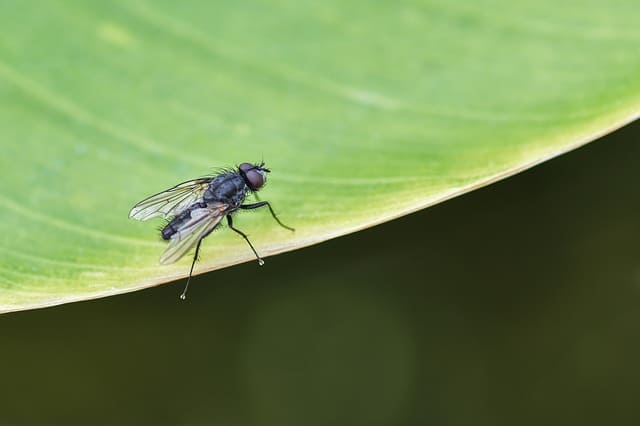
The miasis are all parasitoses caused by dipteran larvae. They are infestations that develop in the dermal dermal-hypodermal site, submucosal site, or in "open" cavities such as the nose, ear canal, anus, vagina, and eye.
The dermis is the most common type of infestation.
The entry route of infection is the skin, which comes in contact with the eggs and larvae of the parasites in various ways:
- deposition of eggs on skin lesions such as ulcers or wounds;
- deposition in the skin;
- surface deposition and larval penetration through sweat pore or hair follicle;
- eposition of eggs on another hematophilic arthropod acting as a vector. In this case the larvae released from the eggs penetrate the skin in the puncture district. This is the case with the classic Dermatobia hominis.
It is appropriate to talk about the most common miasis, which affects not only the local population in the tropics, but also the traveler who is in these latitudes for work or vacation.
We focus on two types: external miasis and special or tropical miasis.
External miasis
.Flies deposit their eggs on ulcers or wounds, all those "continuous solutions" that may occur randomly and often do not attract the patient's attention. The agents are the Musca domestica also known as the common fly, Sarcophaga carnaria and also flies that are part of the genera Chrysomya and Calliphora.
These miases are also common in Europe during the summer season, in the elderly, hygiene-conscious individuals, or in people who are not self-sufficient. In tropical countries, they are very common as a complication of wounds, ulcerations but particularly bedsores forced on individuals admitted to nursing facilities.
They are often observed in Europe during the summer season.
They are often observed in necrotic sites that may also have granulation tissue, often with scabs and multiple vermiform-type larvae that grow rapidly, but the infestation also tends to develop at the level of healthy, contiguous hypodermal tissues.
The larvae develop into pupae in the hypodermis or fall into the environment and a fly develops from these.
Special or tropical molds
.In tropical regions, miases are present all year round, with no particular seasonal periodicity. They are stimulated by various factors such as: poor hygiene, skin lesions, and poorly covering clothing. The Cordylobia anthropophaga, a fly widespread in tropical and subtropical Africa and also known as the Mango Fly, is the main culprit of infestations of this type. Infection with eggs can develop directly through the soil, or through clothing that collects organic residues.
Although the hosts are usually dogs and wild animals, this is one of the most common human infestations in Africa, which can affect the trunk, buttocks, and thighs. The duration of this miasis is usually 14 days and is characterized by painful symptomatology, with large inflamed areas in some cases even slightly edematous, and in pediatrics hyperthermia and adenopathy may be associated.
Miasis usually resolves on its own into scarring or dyschromic lesions (spots), but often the larvae must be extracted by performing a small "surgical" procedure.
Dermatobia Hominis is a fly found in warm humid forests, typical of countries in Central and South America and the Caribbean, and the target is wildlife, livestock and humans.
The most common sites affected are the head, arms, and of course the legs. Typically, typical furuncoloid lesions with inflammation and sometimes edema are observed on the skin, accompanied not infrequently by fever. The larvae have clusters of hooks on the surface and a tail that periodically emerges from the skin fistula of the lesion in order to aid respiration.
Species clinical case
.We report below a clinical example, taken from our experience in Costa Rica.
One of our travelers, a user at a tourist resort, presented with fever for ten days and an inflamed skin area with edema at the malleolar level, where a pre-existing wound was already present, according to the patient's report during the history.
Suspecting infestation, an incision was made to extract Dermatobia hominis larvae. There was also a bacterial overlay with abscessualization of the lesion.
Afterwards, treatment with antibiotics of the type Amoxicillin and Clavulanic Acid was prescribed.




